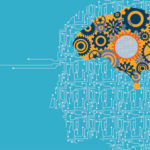COVID disrupted classroom teaching and learning, but it also prompted school district leaders to come up with new and paperless processes to keep school offices and operations running remotely.
Are you interested in building on your “keep after COVID” processes? Learn from a panel of experts in the first of two online conversations to discuss building efficiencies in education. If so, check out Part 1 of this eSchool News webinar series.
Discover how automating your district’s various workflows–from staff onboarding and 1:1 device management to digitized e-signature consent forms–can improve the user experience for administrators, educators, parents, and students alike, while also saving time and money.
Laura Ascione is the Editorial Director at eSchool Media. She is a graduate of the University of Maryland’s prestigious Philip Merrill College of Journalism.
Latest posts by Laura Ascione
(see all)
More from eSchool News
This time of year sees email in boxes filled with information about how to prepare for the next year, reminders that grades are due, and papers await grading. We are deluged with predictions about the future, what to worry about, and sometimes even what to be excited about.
We live in the age of information. Thanks to the internet, we now have all the world’s knowledge at our fingertips. Just think about it: Cooking, philosophy, engineering, literature–anything you could possibly imagine can likely be found using a simple Google search.
Teachers’ jobs are about much more than teaching in the classroom or online. Finding the right learning resources for students is critical–and that’s where the right lesson planning tool can be invaluable.
Despite vaccinations being distributed in record-breaking time, the COVID surge continues to be a wearisome reality for the third consecutive school year.
Preparing students for life beyond high school can mean many things. It can mean making sure they have the knowledge and technical skills needed for a specific job.
There is no argument that teachers are the most valuable asset in a student’s learning experience. This fact was only further underscored over the past 18 months.
For the first time, a slim majority of all U.S. high schools–51 percent–offer foundational computer science, up from 35 percent in 2018.
The reasons that students remain struggling readers in middle and high school are frequently based on myths and misconceptions.
COVID closed in-person classrooms and also gave a boost to cyberthreats to school district networks. As data security breaches–including ransomware attacks, phishing, and unauthorized disclosures–show no sign of slowing, K-12 IT leaders need to be ready.
The federal E-rate program remains a vital and trusted funding source to bring “mission-critical” internet access to schools and libraries, according to an annual report tracking trends and developments related to the federal funding stream.

:max_bytes(150000):strip_icc()/Health-GettyImages-1463319962-8cd36551dfb64dc49fa1bbfbc843bc40.jpg)













